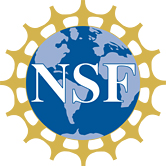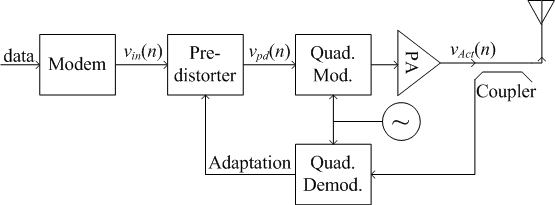|
Two workshops on the use of J-DSP tools for analyzing the use of digital signal processing in real wireless transmitter systesms will be conducted at Arizona State University. The first workshop covers the topic at an undergraduate level and will be held on April 3 in room LSE-B-04 at 1:30PM. The second workshop covers the topic at a gradudate student level and will be held on April 13 in room GWC409 at 11AM. Participants are expected to bring their laptops to the workshop for the hands-on exercises.
Registration:
No registration is required. Please just go ahead and show up ready-to-learn. Your feedback on how to improve the tutorials is appreciated.
Organizers:
| Prof. Andreas Spanias, Arizona State University |
| Robert Santucci, Arizona State University |
Workshop Goals:
- Demonstrate an application of DSP to a practical problem with significant economic impact.
- Discuss tradeoffs between DSP, RF circuit design, and communications when implementing a design.
Workshop Outline:
1) Introduction to practical communications system design
- Limited spectrum availability
- Limited power consumption
- Maximizing bit rate given the above constraints
- Ramifications of non-constant amplitude transmission
2) Amplitude modulation and compression demonstration in JDSP
- Brief introduction to compression region, amplifier classes, and efficinecy
- Use JDSP to see harmonic generation
- Use JDSP to see fundamental frequency gain compression
- Discussion on impact to frequency spectrum (spreading) and adjacent channel spacing
3) Digital Predistortion
- Transceiver topology for use in amplifier linearization
- Gain Based Look-up-table predistorters demonstration in JDSP with toggling design parameters
- Neural Network based predistortion demonstration in JDSP with toggling network size (Graduate students only)
Website Reference:
JDSP for RF Power Amplifiers Website
Attendees: Following is the list of
people who attended the workshop:
| Hassan |
| Ziyad |
| Kang |
| Tianle |
| Baozeng |
| Ted |
| Zhicheng |
| Christian |
| Patrick |
| Gabriel |
| Kevin |
|
| Al Amer |
| Alharbi |
| Ding |
| Gao |
| Han |
| Hench |
| Liu |
| Maillot |
| Martin |
| Al Amer |
| Alharbi |
|
| Steven |
| Cory |
| Richard |
| Hang |
| Siqi |
| Ruopu |
|
Nafati
|
|
Nivia
|
|
John
|
|
Yunfei
|
|
| Ding |
| Gao |
| Han |
| Yan |
| Yang |
| Zhang |
|
Aboserwal |
|
Colon-Diaz |
|
McCann |
|
Xu |
|
Feedback:
Student responses to what they had learned doing exercises.
The combined results of 14 undegraduate and 9 graduate students indicated they had felt they learned the following
from the tutorial
| Question Asked: |
Strongly Agree |
Agree |
Neutral |
Disagree |
Strongly Disagree |
| Learned difference between ideal and real amplifier |
7 |
15 |
0 |
0 |
0 |
| Understand clipping angle, conduction, and gain |
20 |
2 |
0 |
0 |
0 |
| Understand need for PA linearization |
8 |
12 |
2 |
0 |
0 |
| Were provided a comprehensive summary of design tradeoffs between linearity and efficiency. |
8 |
10 |
4 |
0 |
0 |
| Knew the tradeoff between clipping and the production of harmonics |
5 |
14 |
2 |
1 |
0 |
| Saw sufficient clarity in the outpus generated for all exercises |
4 |
11 |
6 |
0 |
0 |
| Learned the imporance of choosing optimum power back off in OFDM |
4 |
13 |
4 |
0 |
0 |
Quantifying results:
To quantify the results, an identical quiz was administered to students before and after
completing the exercises. The student scores to technical questions touching on each of the
sujects before and after completing the exercises changed as follows:
| Question topic: |
% Correct Pre-Quiz |
% Correct Post Quiz |
% Showing Improvment |
| where amplifier efficiency is highest |
43 |
74 |
30 |
| where amplifier linearity is highest |
61 |
87 |
26 |
| how amplifier gain changes with increasing signal amplitude |
52 |
74 |
22 |
| what type of filter a real amplifier can be viewed as |
4 |
65 |
61 |
| what happens to frequency spectrum through a non-linear amplifier |
52 |
83 |
30 |
| spectral leakage causes and effects |
87 |
78 |
-9 |
| what type of filter a predistorter can be viewed as |
9 |
74 |
65 |
| what the gain shape of a combined linearizer and predistorter should be |
70 |
70 |
0 |
The event is co-sponsored by NSF
(Award No. 0817596) and the SenSIP Center, Arizona State University. |


